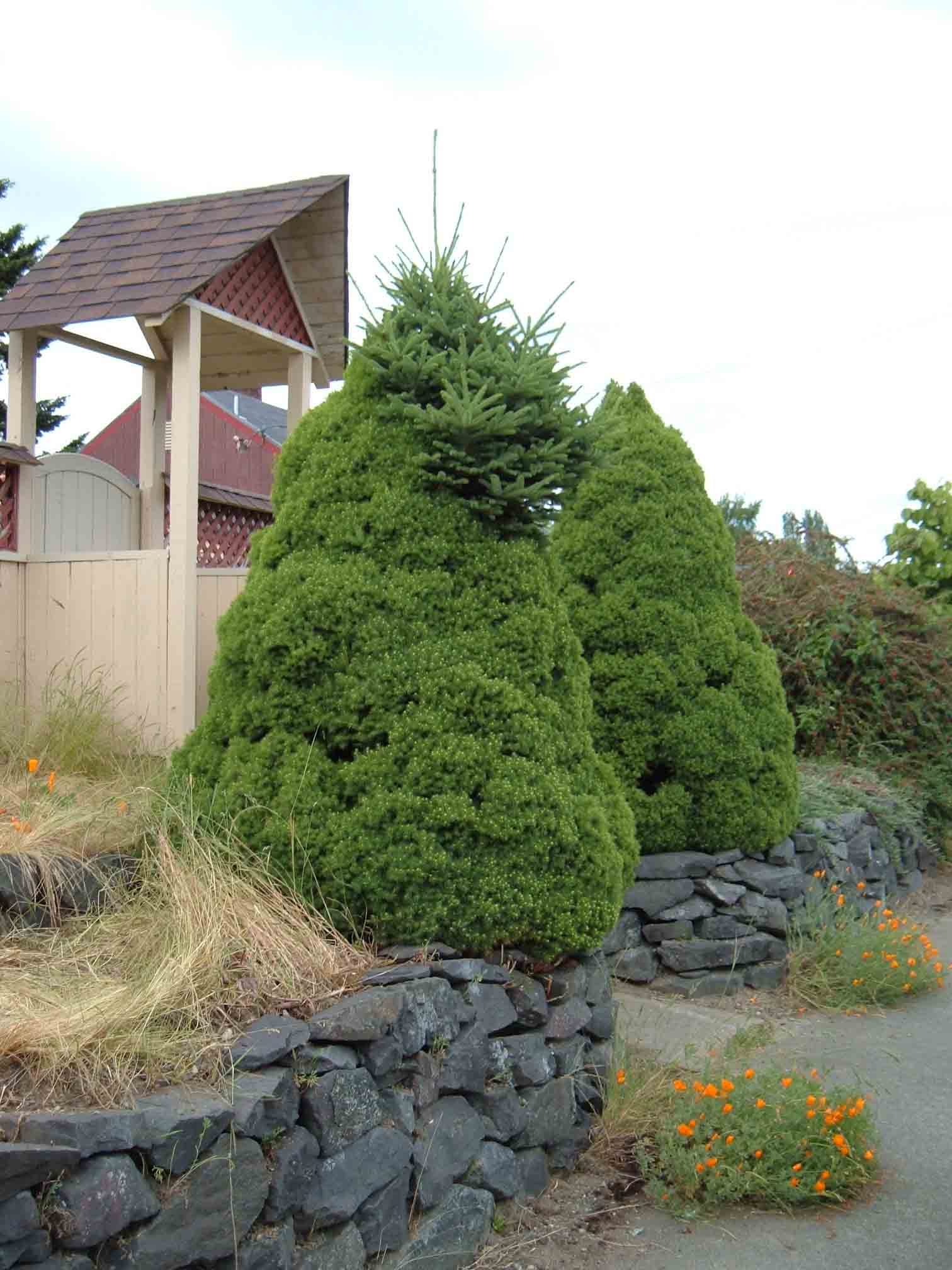Thought we’d take a break from the invasive discussion (I have some throughts I’ll weigh in with on Mon.) In the meantime, here’s a photo of dwarf Alberta spruce not too far from my boyhood home in Olympia, WA. I get 2 or 3 of these calls each year; usually with a homehowner exclaiming, “I’ve got a tree growing out of my tree!”.

I have photos just like these!!!! Not telling!
It’s reverting to it’s natural form.
It is a mutation that is reverting back to the original form.
I’ve always wondered: what is the actual mechanism of this reversion? If the dwarfing was caused by a simple mutation, the chances of it mutating back to wild-type would be next to nothing. The only other plants I can think of that revert regularly are variegated chimeras. Are dwarf Alberta Spruce chimeral perhaps? Does the dwarf trait come true from seed?
ditto on the reverting.
just a little off the top…
Have wondered about that. Waiting for the explanation. Thank you.
Looks like several folks got this one from the start. This is an example of a genetic reversion. Dwarf Alberta spruce is a form of white spruce, Picea glauca. Dwarf forms of conifers are typically the result of chimeras – usually refered to as sports to witch’s brooms. Conifer enthusists scour the woods looking for these and then collect scion wood to graft and propagate the trees. Occassionally the dwarf tree will revert back to the natural growth habit, Actually not all that uncommon in dwarf Albertas.
On the question of seedling mutants. Nothing is 100% with plants, but in conifers, seedling mutants (the other source of dwarf and unusual trees) often involve loss of apical domannce resulting in weeping or irregular forms. Witch’s brooms more commonly produce compact or varigated forms.
And here I thought it was regrowing from being trimmed constantly…
I have a shrub/tree like this next to my house, came with it. This year it started to “grow”, much like the one in the picture, and I always thought that since the branches were being pruned by the prior owner for shape, I assumed it would just keep going, but it hasn’t…
it does indeed look like a mutant though! Is there a chance that the tree will continue to out-branch like that? I don’t really like the compact shrubbiness… I want a nice tree!
Hi Donna:
Probably best if I answer some of your specifics ‘off air’ as it were. If you can send a digital photo to my regular e-mail (cregg@msu.edu) I can have a look. In general, the best plan is to prune out the reversion at the point of origin as quickly as possible. Trying to preserve the revereted plant and elimate the cultivsted form would be difficult. You’ll always have some remnant of the dwarf form unless the reversion starts near ground line.
If you don’t catch this right away can it still be pruned? The cemetary plot of my friends father has a reversion like this except much larger. Should it be cur as far down as possible? Will it fill in
eventually?
Kenny S.
That’s a tough call. Ideally we want to prune a reversion back to the point of origin so it doesn’t keep coming back. Pruning out a reversion like the one in the photo will leave a pretty big hole. Dwarf Alberta’s grow slow so it will take many years to fill in. If the reversion is bigger than the one in the photo it’s probably too late for remedial pruning.